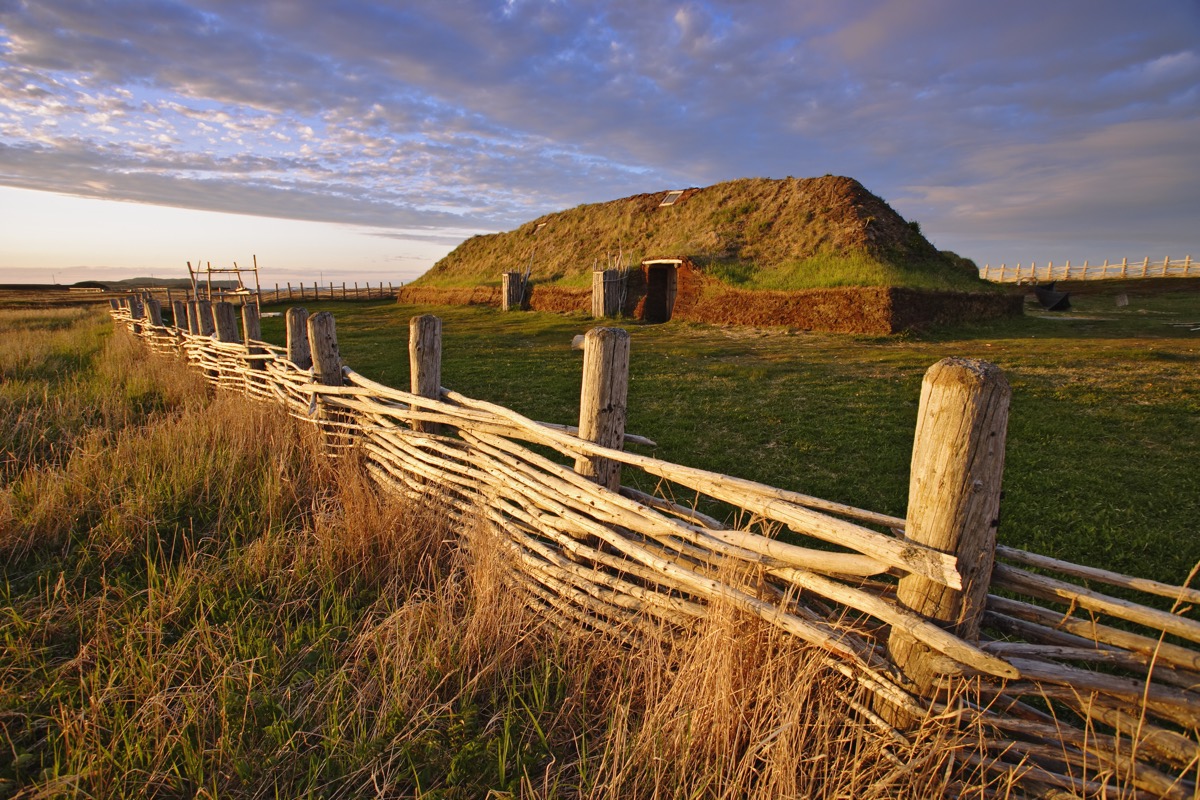Were the Vikings Smoking Pot While Exploring Newfoundland?

The discovery of cannabis pollen near a Viking settlement in Newfoundland raises the question of whether the Vikings were smoking or eating pot while exploring North America.
The researchers also found evidence the Vikings occupied this outpost for more than a century, way longer than previously believed.
Located in northern Newfoundland, the site of L'Anse aux Meadows was founded by Vikings around A.D. 1000. Until now, archaeologists believed that the site was occupied for only a brief period. The new research, published today (July 15) in the journal Proceedings of the National Academy of Sciences, suggests that the Vikings lived there possibly into the 12th or even the 13th century. [In Photos: Viking Outposts Possibly Found in Canada]
Bog finds
In August 2018, an archaeological team excavated a peat bog located nearly 100 feet (30 meters) east of the Viking settlement at L'Anse aux Meadows. They found a layer of "ecofacts" — environmental remains that may have been brought to the site by humans — that were radiocarbon dated to the 12th or 13th century.
These ecofacts include remains of two beetles not native to Newfoundland — Simplocaria metallica, from Greenland, and Acidota quadrata, from the Arctic. The layer also held pollen from Juglans (walnuts) and from Humulus (cannabis), two species that don't naturally grow at L'Anse aux Meadows; rather, the Vikings could have picked up all of these plant and animal species when they sailed south. [Photos: 10th-Century Viking Tomb Unearthed in Denmark]
They also found the remains of dung from grazing caribou, as well as remains of wood and charcoal. The layer from the peat bog is similar to other "cultural layers from across the Norse North Atlantic," the archaeological team wrote in the journal article.
More evidence
Additionally, the archaeologists performed Bayesian analysis — a type of statistical analysis — on radiocarbon dates from artifacts previously excavated at L'Anse aux Meadows. That analysis also suggested Viking occupation for up to 200 years.
Sign up for the Live Science daily newsletter now
Get the world’s most fascinating discoveries delivered straight to your inbox.
"This does not imply a continuous occupation," the researchers wrote, noting that the Vikings could have abandoned and reoccupied L'Anse aux Meadows when it suited them.
Did the Vikings use pot in Newfoundland?
The finding of cannabis pollen raises the question of whether the Vikings used cannabis for making clothes or for medicinal-recreational purposes while they explored North America. Paul Ledger, the lead author of the paper and a postdoctoral fellow at Memorial University of Newfoundland urged caution on the interpretation of the findings, noting that pollen can easily be carried by the wind.
Ledger urged caution on the interpretation of the findings, noting that pollen can easily be carried by the wind. It's also possible that some of the other "ecofacts" were brought to the peat bog by indigenous peoples who lived in Newfoundland, and not by the Vikings. [Fierce Fighters: 7 Secrets of Viking Seamen]
Ultimately, "the results presented here [in the journal article] pose more questions than answers," the archaeological team wrote.
Reaction from other Viking researchers
Viking researchers not affiliated with the research team urged caution about the results.
"I think it is too early to draw any conclusions," said Birgitta Wallace, a senior archaeologist emerita with Parks Canada who has done extensive research on the Vikings in North America. Wallace told Live Science that she isn't convinced that the Vikings left behind these ecofacts.
"I think it is highly unlikely that the Norse [another word for Vikings] would have returned in the 12th and 13th centuries, as there are no structures on the site from that period that could be Norse," Wallace said. "We do know that there were indigenous people, ancestors of the Beothuk, on the site at that time."
Patricia Sutherland, a visiting scientist at the Canadian Museum of Nature who has also done extensive research on the Vikings in North America, said that while the Vikings could have been in Newfoundland during the 12th or 13th centuries, it is too early to say for sure. "It seems premature to suggest such a scenario on the basis of the 'ecofacts' listed in the paper," Sutherland said. It's possible that some of the beetles and plant pollen found in the layer were brought to L'Anse aux Meadows by the Vikings around A.D. 1000, and they continued to flourish after the Vikings left, Sutherland said.
The research team plans to continue their work at L'Anse aux Meadows in August, Ledger said.
- Photos: Viking Warrior Is Actually a Woman
- The 25 Most Mysterious Archaeological Finds on Earth
- 30 of the World's Most Valuable Treasures That Are Still Missing
Editor's note: This article was updated to fix a statement about the interpretation of the cannabis pollen.
Originally published on Live Science.

Owen Jarus is a regular contributor to Live Science who writes about archaeology and humans' past. He has also written for The Independent (UK), The Canadian Press (CP) and The Associated Press (AP), among others. Owen has a bachelor of arts degree from the University of Toronto and a journalism degree from Ryerson University.










